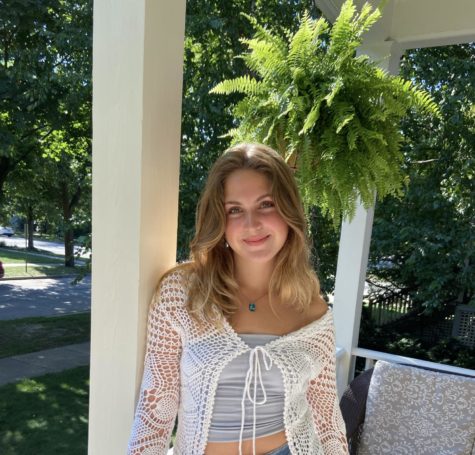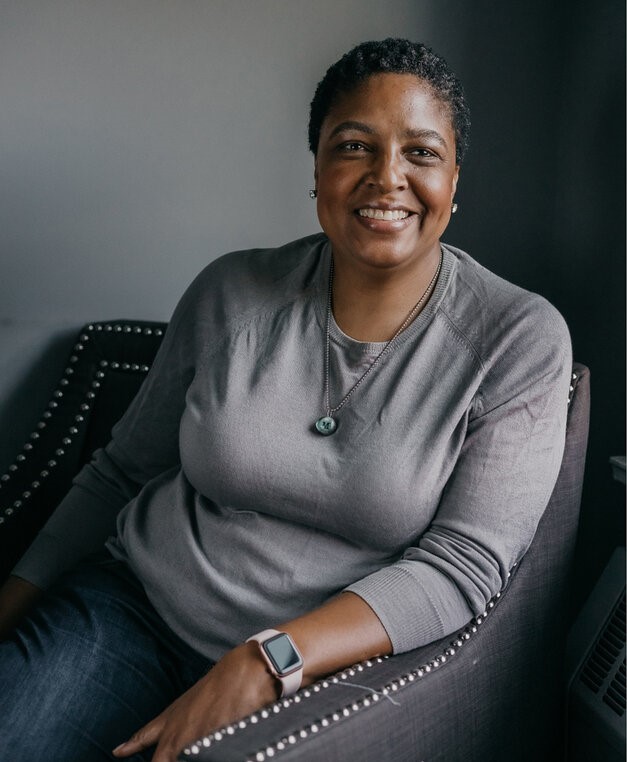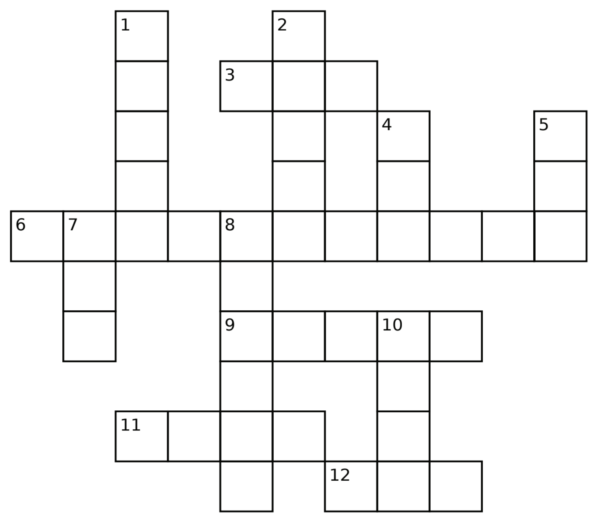Local artist uses art to heal during challenging times
Art is more than materials, melodies or words conglomerated together to form intricate designs–it is an agent of healing. If it weren’t for Van Gogh’s time at the psychiatric hospital of Saint-Rémy-De-Provence, the world would have never seen Wheat Field With Cypresses, a painting inspired by the views outside his bedroom window. It was healing for him–to practice his craft despite the restrictive nature of the institution—and it’s healing for us, the viewers, to stare at a painting so beautiful whilst understanding the context of his struggles. Art is necessary for overcoming traumatic life events, and as a result, it is becoming increasingly necessary in Evanston, where gun violence and death are plaguing our community.
“The level of trauma that we’ve all encountered with COVID, and with the civil and social unrest [within our city and country] has been so devastating and so pervasive that just talking about things, or bringing them to the forefront, isn’t enough. When you have hurt that goes this deep, you have to do something that moves that trauma around, so dancing, massage, coloring, sewing, anything that provides movement and has a sense of focus and intention, helps to get to those places where you can’t really put words to that level of pain and hurt,” says Dr. Melissa Blount, a clinical psychologist and activist in Evanston.
Blount has been involved in several community social justice art projects since moving to Evanston. Her first introduction into the town’s activist art scene was through the Unitarian Church on Ridge Ave.
“When we first moved here, I was really touched by the Unitarian Church with their big Black Lives Matter sign, so I started going [there, and] they do a lot of anti-racist education. I [also] started going to the YWCA Daily Race Talks, and as I got to know people and think [more deeply about racialized issues I became passionate about] the school-to-prison-pipeline, and [how there are] higher suspension rates for black students than white students,” Blount explains.
Inspired by the conversations with her peers about educational injustices, Blount co-founded Making Evanston Equitable Together (MEET) and Organization for Positive Action and Leadership (OPAL), two non-profit organizations dedicated to tackling local issues relating to race through political and social action. Both organizations laid the groundwork for Blount to explore the relationship between art and healing, which crystallized into a later project in 2016 titled the Black Lives Matter (BLM) Witness Quilt project. She describes how it began:
“Ben, [her husband, who is also an artist] did a calendar project in 2017 called 275 holidays. And that calendar project was inspired by a racist comment that a white co-worker made to one of his black co-workers [pertaining to how black men and boys are disproportionately shot and killed]. . . So Ben was like the men and boys that are being killed matter, and we need to honor them, so he did a memorial of over 700 people who were shot and killed that year, and he showcased it in 2017,” Blount explains. “[When he was doing research on who to include in the piece in 2016,] he saw that there were many black women who had been shot and killed, but the way they died was [oftentimes] at the hands of their partner, or they were in proximity to men who were the target, and they were killed. So [that] just made me think about how there was very little conversation about how black women were dying, so I created the Black Lives Matter Witness Quilt project to get people to come together to talk about these issues and how it impacts us all—not just black women on those south and west sides of Chicago, but how that kind of vulnerability impacts their lives and our lives too.”
The BLM Witness Quilt project was showcased in June 2017 at the Frances Willard Museum House in Evanston. Detailed on the quilt were 56 hand-stitched squares to represent and specifically name the black woman who died from domestic violence or violence by association in Chicago from 2016-May 2017. The project, although an impetus of bringing unaddressed issues forward, was “really difficult” for Blount emotionally. As a result, Blount began another artistic endeavor, the ABC’s of Black Girl Magic, to highlight 27 historical black women. She describes the importance of balancing heaviness with joy when doing artwork.
“When you’re navigating these really hard issues as an artist, you have to be really careful that you also balance it out with joy. The BLM quilt project was really difficult, [because] I was reading about women being murdered in different kinds of ways, and out of that sense of despair birthed the Black Girl Magic [textile project]. The story can’t just be how black women being murdered; we need to also pay attention to the women who, historically and in current times, are doing incredible things, and [how] we’re experiencing the benefits of some of their accomplishment. That project just bought this sense of awe and wonder and [also] made me more conscious of how I have to protect my heart [because] when I’m navigating these issues [they] can be so awful and dark.”
In her professional life, Blount incorporates art into her therapeutic practice. She frequently uses music, television, books and her own journey with art to connect with her clients.
“I have to be careful [with my clients] because I don’t want to muddy the therapeutic alliance when I bring up myself, but I have one client who was horrified that I hadn’t listened to Beyoncé’s Lemonade, and so music, as well as [the show] Lovecraft Country, are huge points of conversation with my Black clients, and especially with Black men. I do talk about my sewing circles and the healing that happens in community [because] when you bring people together in an intentional way, [healing happens]. I [also] recommend books [to my] clients, by authors [such as] Bell Hooks [with her book] ‘All About Love’. Art in all forms is a huge part of my therapeutic practice.”
Blount also spoke to the importance of art in mobilizing polarized audiences to support social justice movements. When asked to elaborate on this thought, she referenced the Civil Rights Movement in the 1960’s, when conservative audiences were rebelling against a national incentive to provide Black, Brown and low-income people with equal rights.
“[If you look at] the history of the Civil Rights Movement, artists [were] at the forefront of that movement [because] they provided encouragement and sustenance to people when they were feeling hopeless or struggling with despair and overwhelm . . . When you use art . . . it softens people in a way that they can digest, or hear things differently—that’s been my understanding of the use of art.”
Just as so many have before her, Blount sees art as essential to how she lives.
“[Art] keeps me grounded. I have ADD, so it’s very hard for me to sit still and sustain focus, so I started knitting. Knitting, especially for a person who has attention issues, is a way of grounding [myself]. That’s why I go to art, especially embroidery or drawing or coloring because it’s a way of grounding and settling myself when I’m struggling.”
Your donation will support the student journalists of the Evanstonian. We are planning a big trip to the Journalism Educators Association conference in Philadelphia in November 2023, and any support will go towards making that trip a reality. Contributions will appear as a charge from SNOSite. Donations are NOT tax-deductible.








Meredith Dimon • Aug 18, 2022 at 9:49 am
So proud of all you are accomplishing, Melissa! ❤️